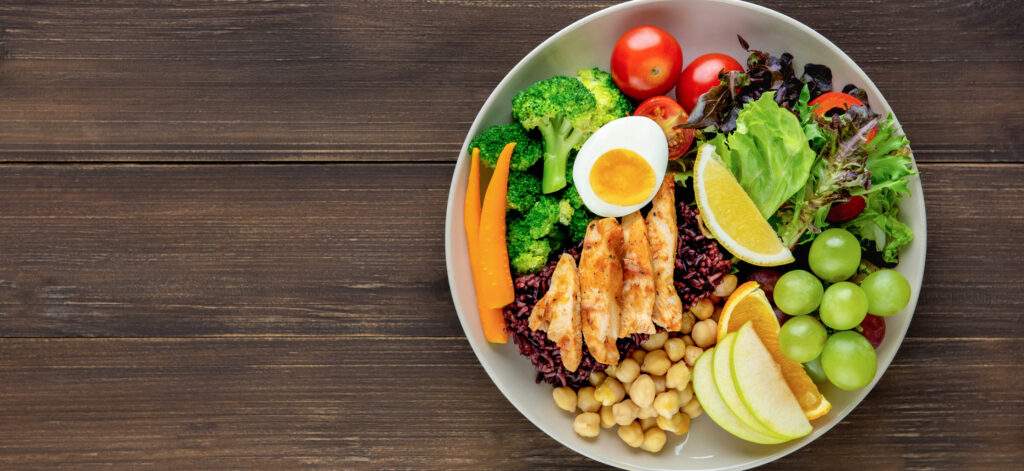By: Kellsey Reed RDN, LDN, PatientsLikeMe Contributor
When it comes to managing your CKD, there are so many things to keep in mind! Protein, phosphorus, potassium, and so much more. It can be overwhelming to take steps to eat a more kidney-friendly diet. One thing that can be a great first step in healthily managing your chronic kidney disease is to follow a low-sodium diet.
Why is a low-sodium diet important for CKD?
Sodium is an important mineral to keep in mind when you have CKD. One of the top causes of CKD is hypertension or high blood pressure. A high sodium diet can increase blood pressure, leading to hypertension. Studies show that excessive amounts of sodium in your diet can lead to decreased kidney blood flow, increased proteinuria, and decreased effectiveness of blood pressure medications (1). These are all things that can negatively affect the kidneys and further the progression of CKD.
Therefore, it is so important to follow a low-sodium diet with CKD. Research shows that a low-sodium diet can help to better control blood pressure and lower proteinuria in those with chronic kidney disease (2). But, in a world where so much of the foods we eat contain high amounts of sodium, how can we follow a lower sodium diet?
What is a low-sodium diet for CKD?
Sodium is a mineral and an electrolyte. It is an essential nutrient that we need in our bodies to help maintain our fluid balance and help our nerves and muscles function. We need some sodium to survive, but we don’t want excessive amounts in our body, especially when it comes to CKD management. Most of the sodium we get in our bodies is from salt in our foods that we eat. Sodium is added to foods for many reasons: to add flavor, preserve food, and provide moisture.
Some high-sodium foods are:
- Salt
- Soy sauce
- Pickles
- Snack foods like potato chips, crackers, and pretzels
- Frozen meals
- Salad dressings
- Condiments like mayo and ketchup
- Seasonings like garlic salt
- Restaurant food
- Canned goods
- Packaged poultry (this is a tricky one, be sure to read the label for your poultry items to check for hidden sodium!)
The current recommendation for sodium intake for those with CKD is 2,000mg of sodium per day. According to the FDA, most Americans consume on average 3,400mg of sodium per day. This can be too much for those with chronic kidney disease and can cause issues with high blood pressure and kidney function in general. Following a low-sodium diet with CKD is key!
How to read the nutrition facts label for sodium content
Reading a nutrition label can be so confusing and overwhelming. When it comes to looking out for sodium content on a label, here is what to keep in mind. Sodium on the label tells you how many milligrams of sodium are in each serving/portion of that food. Remember, if you eat more than one serving, you are eating more than one serving’s worth of sodium too!
The percent daily value of food tells us how much that specific serving of food is contributing to our overall goals for the day. It can be helpful to look at the percent daily value for sodium to ensure you are following a lower sodium diet. A low-sodium food is considered to be less than 5% of the % daily value (less than 140 mg sodium per serving). A high-sodium food is considered to be >20% of the % daily value (more than 140 mg sodium per serving).
You may also see many different claims on the label like “reduced sodium” or “lightly salted”. These can be confusing and overwhelming to navigate. Here is what these claims mean and what you should look for on the label:
- Salt/Sodium-Free: <5 mg of sodium per serving
- Very Low Sodium: 35 mg of sodium or less per serving
- Low Sodium: 140 mg sodium or less per serving
- Reduced Sodium: At least 25% less sodium than the regular product
- Light in Sodium/Lightly Salted: At least 50% less sodium than the regular product
- No-Salt-Added/Unsalted: No salt is added during processing (may not be salt/sodium-free)
Low-sodium swaps for your CKD
- Instead of salt ➡️ try low sodium or no salt added seasonings like Dash seasoning
- Instead of using soy sauce ➡️ try using coconut aminos to flavor your Asian-inspired dishes
- Instead of high-sodium salad dressings and sauces ➡️ try using herbs, spices, vinegars, and citrus juices to add flavor to your foods
- Instead of using a full teaspoon of salt ➡️ try using a pinch of ⅛ teaspoon of salt for a lower sodium intake
- Instead of buying high-sodium frozen meals and foods ➡️ try buying ingredients to make your own meals or look for lower-sodium options in the freezer section
- Instead of buying regular canned foods ➡️ try buying low-sodium or no salt-added canned beans, vegetables, etc.
- Instead of having large portions of high-sodium foods ➡️ try having smaller portions
Overall, a low-sodium diet is beneficial for both the heart and the kidneys. Keeping your heart healthy and blood pressure in a normal range is important for managing your chronic kidney disease. It can be difficult to navigate a low-sodium diet with CKD, but it can be easier when you keep a few things in mind like how to read the nutrition label and what to look for in the store. What steps can you take to follow a lower sodium diet with CKD? Visit https://www.patientslikeme.com/forum/ckd/topics for other tips of living for managing your CKD!
Resources:
- https://www.jrnjournal.org/article/S1051-2276(18)30043-8/fulltext
- https://www.ncbi.nlm.nih.gov/pmc/articles/PMC7369961/
- https://www.fda.gov/food/nutrition-education-resources-materials/sodium-your-diet#:~:text=Know%20Your%20Numbers&text=Americans%20eat%20on%20average%20about,1%20teaspoon%20of%20table%20salt!

